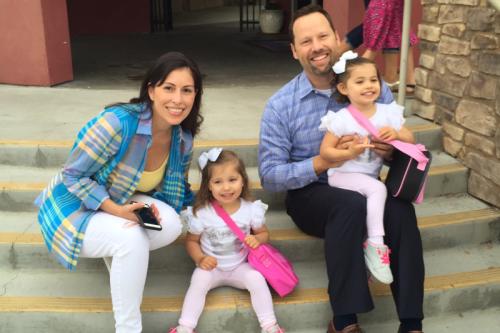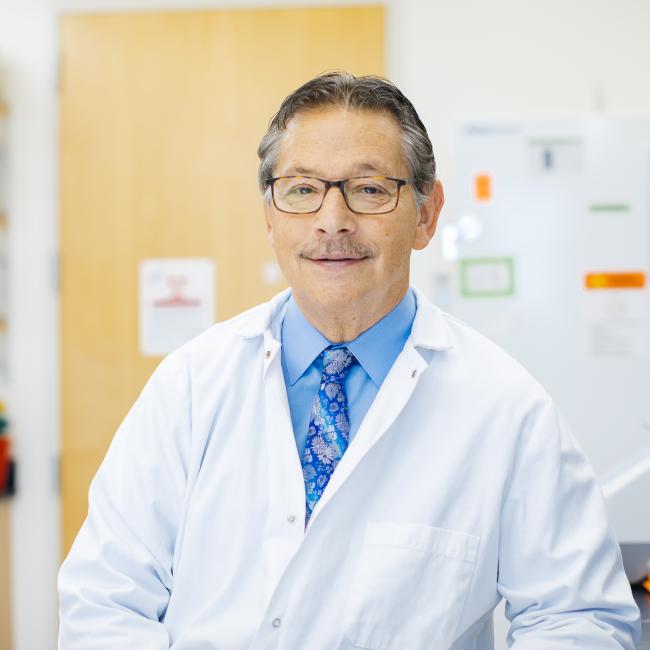
Pioneering stem cell gene therapy cures infants with bubble baby disease
FINDINGS
UCLA researchers have developed a stem cell gene therapy cure for babies born with adenosine deaminase-deficient severe combined immunodeficiency, a rare and life-threatening condition that can be fatal within the first year of life if left untreated.
In a phase 2 clinical trial led by Dr. Donald Kohn of the Eli and Edythe Broad Center of Regenerative Medicine and Stem Cell Research at UCLA, all nine babies were cured. A 10th trial participant was a teenager at the time of treatment and showed no signs of immune system recovery. Kohn’s treatment method, a stem cell gene therapy that safely restores immune systems in babies with the immunodeficiency using the child’s own cells, has cured 30 out of 30 babies during the course of several clinical trials.
BACKGROUND
Adenosine deaminase-deficient severe combined immunodeficiency, also known as ADA-SCID or bubble baby disease, is caused by a genetic mutation that results in the lack of the adenosine deaminase enzyme, which is an important component of the immune system. Without the enzyme, immune cells are not able to fight infections. Children with the disease must remain isolated in clean and germ-free environments to avoid exposure to viruses and bacteria; even a minor cold could prove fatal.
Currently, there are two commonly used treatment options for children with ADA-SCID. They can be injected twice a week with the adenosine deaminase enzyme — a lifelong process that is very expensive and often does not return the immune system to optimal levels. Some children can receive a bone marrow transplant from a matched donor, such as a sibling, but bone marrow matches are rare and can result in the recipient’s body rejecting the transplanted cells.
METHOD
The researchers used a strategy that corrects the ADA-SCID mutation by genetically modifying each patient’s own blood-forming stem cells, which can create all blood cell types. In the trial, blood stem cells removed from each child’s bone marrow were corrected in the lab through insertion of the gene responsible for making the adenosine deaminase enzyme. Each child then received a transplant of their own corrected blood stem cells.
The clinical trial ran from 2009 to 2012 and treated 10 children with ADA-SCID and no available matched bone marrow donor. Three children were treated at the National Institutes of Health and seven were treated at UCLA. No children in the trial experienced complications from the treatment. Nine out of ten were babies and they all now have good immune system function and no longer need to be isolated. They are able to live normal lives, play outside, go to school, receive immunizations and, most importantly, heal from common sicknesses such as the cold or an ear infection. The teenager who was not cured continues to receive enzyme therapy.
The fact that the nine babies were cured and the teenager was not indicates that the gene therapy for ADA-SCID works best in the youngest patients, before their bodies lose the ability to restore the immune system
IMPACT
The next step is to seek approval from the Food and Drug Administration for the gene therapy in the hopes that all children with ADA-SCID will be able to benefit from the treatment. Kohn and colleagues have also adapted the stem cell gene therapy approach to treat sickle cell disease and X-linked chronic granulomatous disease, an immunodeficiency disorder commonly referred to as X-linked CGD. Clinical trials providing stem cell gene therapy treatments for both diseases are currently ongoing.
AUTHORS
Kohn is a professor of pediatrics and microbiology, immunology and molecular genetics at the David Geffen School of Medicine at UCLA, member of the UCLA Children’s Discovery and Innovation Institute at Mattel Children’s Hospital and member of the UCLA Jonsson Comprehensive Cancer Center. The first author of the study is Kit Shaw, director of gene therapy clinical trials at UCLA.
JOURNAL
The research was published in the Journal of Clinical Investigation.
FUNDING
The research was funded by grants from the U.S. Food and Drug Administration’s Orphan Products Clinical Trials Grants Program (RO1 FD003005), the National Heart, Lung and Blood Institute (PO1 HL73104 and Z01 HG000122), the California Institute for Regenerative Medicine (CL1-00505-1.2 and FA1-00613-1), the UCLA Clinical and Translational Science Institute (UL1RR033176 and UL1TR000124) and the UCLA Broad Stem Cell Research Center.
